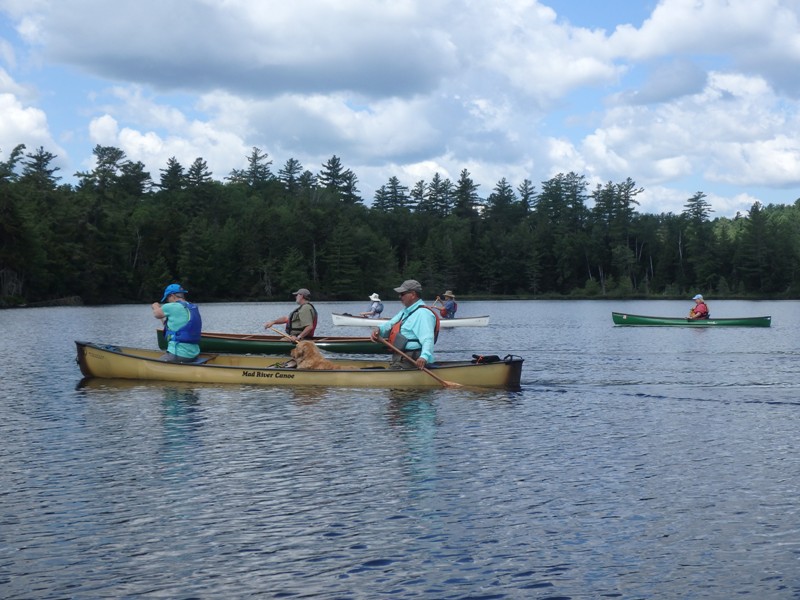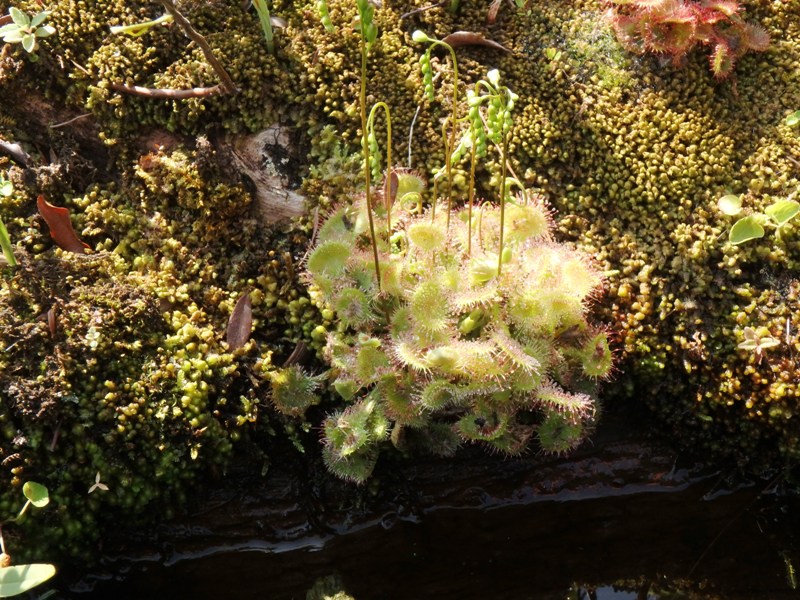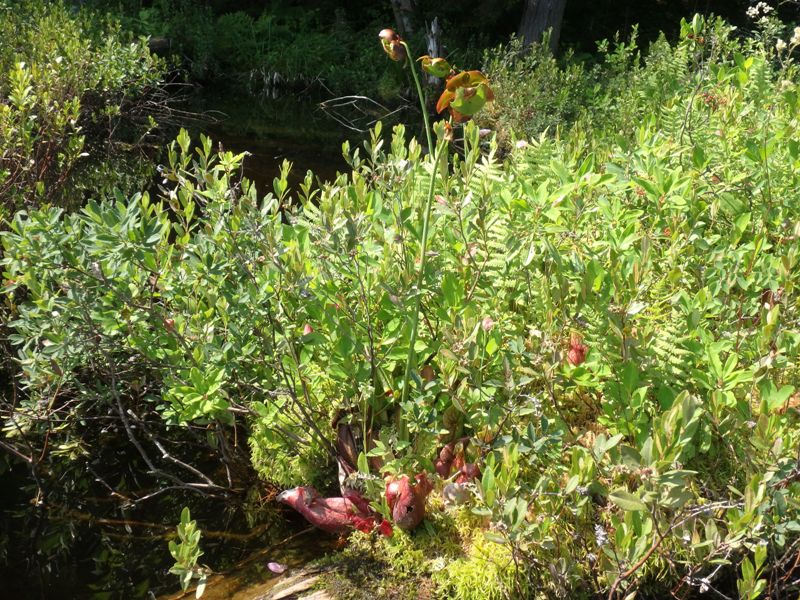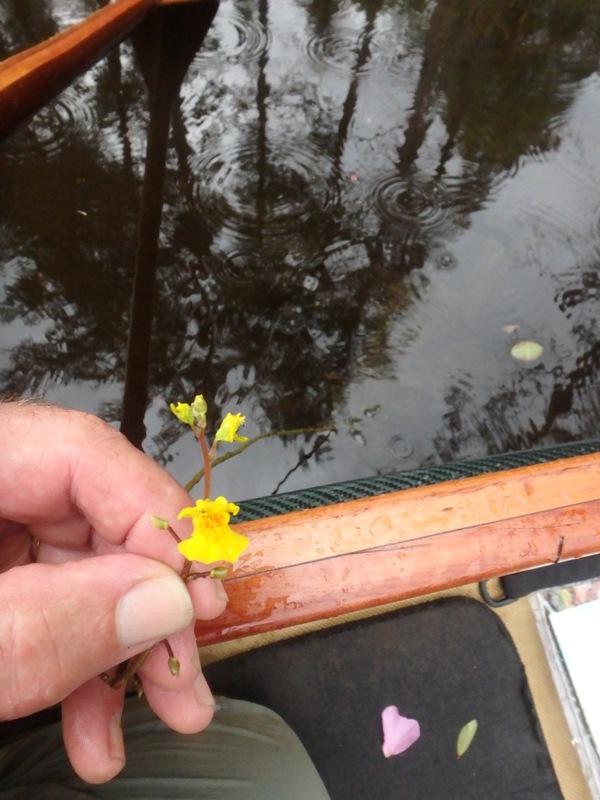Mariton: What’s For Dinner?
by Tim Burris, Preserve Manager.

Our armada on an Adirondack Pond
Recently, Maureen and I went to the Adirondacks to canoe. Some of our canoeing friends camped in the same campground and we would sit around the campfire each night to plan the next day’s foray. I am always interested in canoeing new waters, but I am especially interested in the interesting bog plants that grow along the edges of many Adirondack ponds. So, I often lagged behind as I poked along the edge taking photos of things to key out when I got back to camp. The timing or our trip was great for these flowers.

Sundews on a log
For instance, I had never seen Sundews (Drosera rotundifolia) in flower until this trip. I didn’t get great photos of the blossoms, but a couple days later I did get a nice photo on another pond after the flowers had set. This is a wonderful plant that can be found in many boggy and wet areas. This is an insectivorous plant much like a Venus Flytrap. You can see the sticky substance on the tips of the leaf “hairs”. This is a small plant but my friend, Bruce, and I got quite good at recognizing from a distance which logs would hold a colony.

Pitcher plants with flowers above the other vegetation.
Another insectivorous plant is the Pitcher Plant (Sarracenia purpurea). The pitcher-shaped leaves fill with water and trap insects that are then absorbed in the “soup” that feeds the plant. I have seen the flower buds for this plant many times, but this time we saw several blossoms opened. The large green and brown square blossom is on a long stalk above the actual pitcher plant.

Common Bladderwort
I was really proud to notice and take a photo of this Common Bladderwort (Utricularia macrohiza). I slightly remember seeing a Bladderwort during a college wildflower course, but I didn’t realize that is what I had found until I keyed it out back at camp. Bladderworts have fine leaves that look like roots, but they actually don’t have roots. The leaves have little air bladders that keep the plant afloat, but also catch microscopic water organisms. I wish I had realized what I had at the time. I would have spent more time looking at the air bladders on the leaves.
These different carnivorous plants live mostly on pretty sterile substrates: wet sand, sphagnum moss bogs, dead logs, or in acidic water. These plants can’t get nutrients and minerals from the soil, so they have evolved to capture insects and other organisms to supply what they need. They don’t necessarily have showy flowers, but I appreciate how they can proliferate in an otherwise challenging environment.
